Young Jim White’s Adventure
Imagine it’s 1898, and you are a young boy of 16 years old. Your father sent you out with your trusty horse to search for some missing cattle. As the sun sets, you see a black cloud rising up into the orange and pink sky. Urging your horse forward, you realize that the cloud isn’t a cloud at all but a swarm of bats; millions of bats swirling in a whirlwind and with a barely audible rushing sound. You tie your horse to a nearby tree and push your way through the dense brush. You stop just short of a rocky slope and stare into the biggest, blackest hole you’ve ever seen in your life. Even though the bats seem to boil out of that black abyss, you don’t feel fear at all, you feel the edge excitement and a driving desire to explore that deep earthen maw.
This is the story of how a young cowboy, Jim White, discovered Carlsbad Caverns. Even though many more Native Americans and Mexicans also discovered the caverns prior to young Jim, his story captivates me more than any other due to his curiosity and tenacity.
Days later, Jim returned with food, water, homemade kerosene lanterns, hemp rope, and a ball of string. For the next three days, he wandered the caverns covering much of the area, where the modern trail crosses today. Back then, Jim’s expedition was slow going and rough. First, he would have to navigate the rough jagged rocks down to the entrance, then find a good place to tie off his string so he could find his way back out. He then worked through piles and piles of bat guano, after making headway into the main portions of the cave. On later visits Jim, explored other chambers of Carlsbad including the Big Room, King’s Palace and Queen’s Chambers.
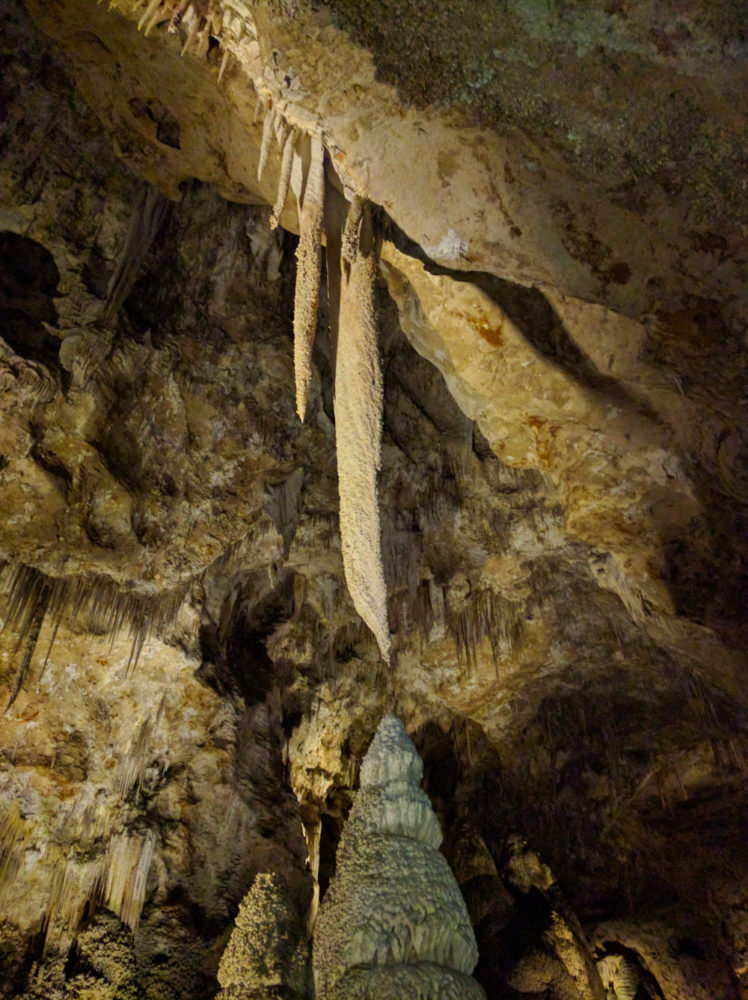
Sword of Damocles
Into the Big Room
After descending one and a quarter miles through the snaking Natural Entrance Trail, Hitch and I made it to the Big Room Junction. From where we stood, I could only see about half way into the largest chamber of Carlsbad Caverns. According to the signs, the total volume of the Big Room is 357,469 square feet. Area wise, it covers 8.2 acres, which is enough to fit six football fields with room to spare. If I decided to take an audio tour device with me, I know it would have offered more insight, but be detracted from the sense of mystery and adventure I felt. I’ve been in a few caves, and the wonder of Big Room is nothing like Jewel Cave or Wind Cave. I have never seen anything of its like and is possibly the most amazing sight I’ve seen, both underground and above.
Without the lights, this cavern would be nothing but blackness. The Big Room offers countless cave formations, of numerous types, and some of giant proportions. A nearly infinite number of fossils hide within these rocks, and won’t reveal themselves without a good light and a trained eye.
We take the right fork and head deeper into the Big Room. We pass a formation called The Sword of Damocles, a stalactite with a form similar to a sword, down to the point. Unlike the fabled sword above Damocles, this sword cave hangs tightly to the ceiling, and without a single strand of horsehair tied around the pommel to suspend it. Just beyond the sword, two strange stalactites covered in cave popcorn dangle like disembodied tails. The formation with the bulb at its tip is called Lion’s Tail, due to the resemblance of its namesake.
As I looked around, I noticed that the cave popcorn formations appeared frequently upon the surface of other cave shapes, but stopped at a certain level. According to a cave geology book, these clusters of small bulbous protrusions were most likely formed by an air convection system moving through the cave. Warm humid air enters the cave, collecting minerals that it absorbs from surrounding rocks through a process similar to aerosolization, where mineral particles are small and light enough to be carried within the water vapor. As the warm moist air travels from floor to ceiling, it loses heat to the rocks and its relative humidity decreases. Then as the air cools, it begins to sink. The moisture in the air condenses, causing it to deposit the minerals on the walls and formations it meets. Air, water, and earth working in concert to create a marvelous wonder.
Hall of Giants
Deeper into the cavern and rising up from the floor are towering stalagmites. The one called Giant Dome climbs to 62 feet high and measures 16 feet in diameter at its widest point. Nearby, Twin Domes stand only slightly smaller, with their superbly proportioned and delicately fluted shapes. I realize without normal reference shapes, such as a tree or car, it’s hard to grasp the breadth and height of these cave formations. I decided to walk a distance away from Giant Dome while Hitch stayed near its base. After a few paces, I get a sense of the size of these natural creations: Giant Dome is roughly the height of a six-story building, just 10 feet short of the White House. I am still in awe of these beautiful limestone monoliths. Each of these giant stalagmites took millions of years to form with the constant dripping of water from the ceiling.
Fairyland and the Temple
As we round a blind corner, we end up in a striking setting of stone. Hundreds of popcorn-covered small stalagmites stand like deformed creatures marching along the cave floor. Above thousands of soda straw formations dangle delicately. As thin precursors to stalactites, soda straws form as water drips from the ceiling, creating a ring of calcite on the outside of the drop. The formation grows in a uniform diameter and into a hollow straw until something plugs it and forces the water to flow on the outside to form a traditional stalactite. Also known as tubular stalactites, these formations grow in places where water filters slowly through cracks in the rock.
Amid the wonderland, persists a giant limestone column. Due to its tapered shape and stepped like appearance, the column is aptly named the Temple of the Sun. This formation is a fine example of where a stalactite and stalagmite have merged to form a contiguous pillar of limestone.
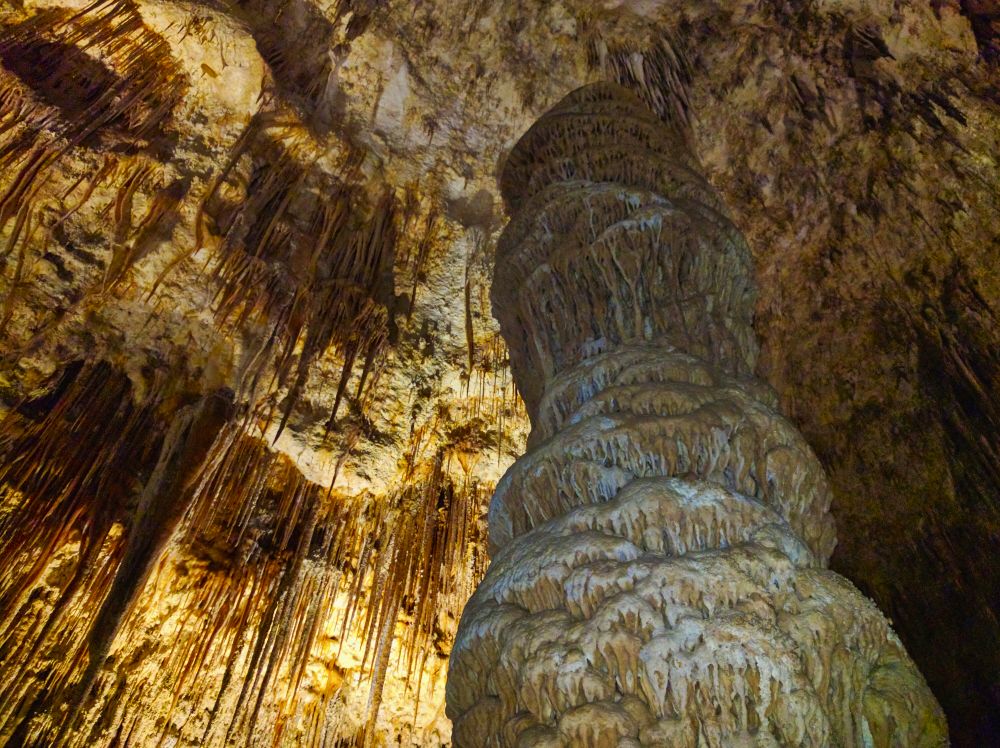
Flowstone Temple
The Caveman, the Totem Pole, and the Boob
Just as we leave the Fairyland area, we keep to the right and pass the shortcut path. We end up in an area filled with larger stalagmites. The Breast of Venus is squat and short stalagmite. It’s unusually smooth surface is formed by rapidly dripping water.
Another stalagmite nearby is called The Caveman, so named for its shape, although I had a hard time seeing the “caveman” himself. Hitch later pointed out that the “caveman” sits with his head resting upon a hand, just like Rodan’s The Thinker.
As we come upon another stalagmite officially named the Totem Pole, I could hear the distinct drip-drop-plop of water. All totem pole formations are formed by a single drip of water, hitting the exact same spot for thousands if not millions of years.
Looking up, toward the south end of the Big Room, hangs a magnificent stalactite group dubbed The Chandelier. Typically stalactites are older than their ground counterparts. The process is exceedingly slow, with an average of 0.0051 inches per year, although if conditions are right they grow as much as 0.12 inches per year. Too fast a drip rate and the solution will carry most of the minerals away leaving nothing to deposit. Nearly all limestone stalactites begin with a single mineral-laden drop of water. When the drop falls, it deposits the thinnest ring of calcite, and with enough drops, a simple soda straw forms. As I stand nearly beneath The Chandelier, I wonder how many millions of years did it take to form, and how has it remained in such great condition.
To the Jumping Off Place
Just as the trail takes a turn with an easy uphill climb, we pass a kiosk detailing the 1924 National Geographic sponsored expedition of Dr. Willis T. Lee. Just behind the plaque is a gaping hole that goes deeper into the earth and to a place known as Lower Caves. There is an old wire ladder attached to the mouth of the hole before us where the original explorers used to reach the Lower Caves for the first time. I cannot imagine myself climbing down such a ladder, not without also imagining falling to my doom.
We continued our walk and end up at the top of a cliff only guarded against falling by a rail. Another sign tells us that below where we stand is an area known as the Lower Cave. The light was sparse down there and I couldn’t see the floor. I took a moment to shine my headlamp light down into the inky blackness. I soon realized that if I fell from here, I would fall 93 feet to the rocky floor and my ultimate demise. With the extra light, Hitch points out another balcony on the other side of the chasm at the same height as we are. We gazed back down at the rubble below and surmised that there may have been a bridge between this cliff and the other.
Top of the Cross
We trekked slowly down the hill, careful not to slip on the wet slick surface of the trail. We make it to an area known as the Top of the Cross. If you look at a map of the Big Room, it kind of looks like an inverted cross, and thus its name. I remember looking above and spotting large fractures in the ceiling, that formed a kind of cross as well.
As we wander around, Hitch takes a seat on one of the many rows of stone benches facing a concrete stage. I know in years past, they held concerts and events in this area. Carlsbad Caverns even owned its own radio station at one point. As part of the National Park Service’s Centennial celebration, four members of the New Mexico Philharmonic performed here just last year. What a wonder that must have sounded like!
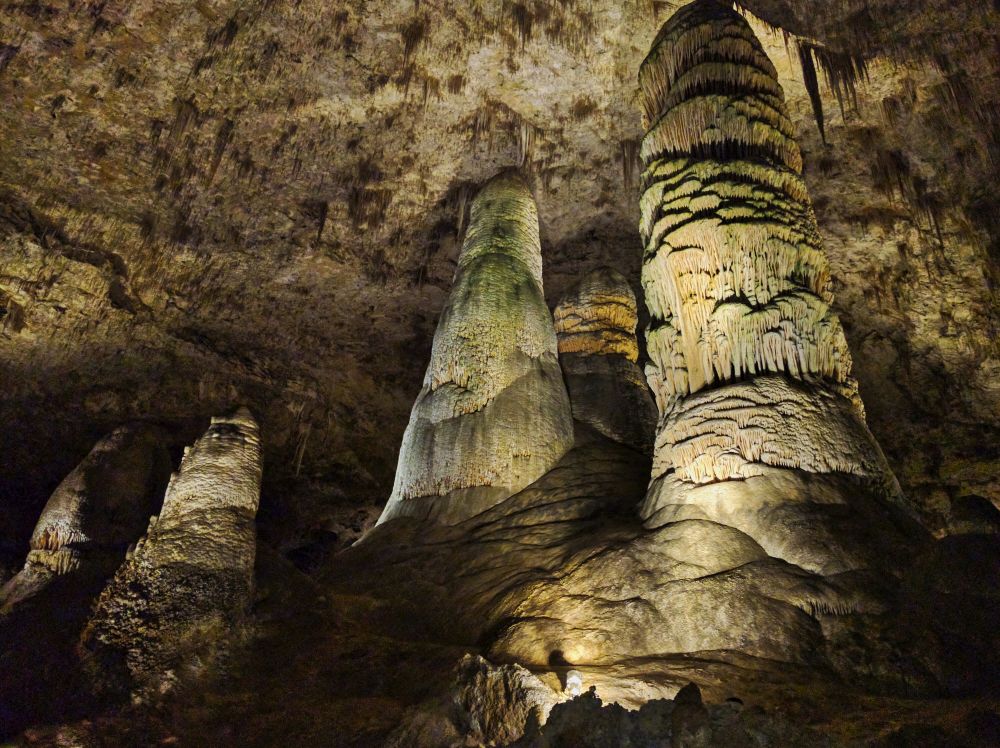
Hall of the Giants
Mirror Lake and Cave Crickets
As we push onto the other arm of the cross, we pass a pool of water entitled Mirror Lake. The Rangers were even cute and created a sign that was mirror-reversed, so you could read it correctly in the reflection of the water.
In cave pools like Mirror Lake, live simple invertebrate creatures such as worms. The most creepy cave creature is the Horsehair Worm, which cannot exist out of the water. The larva of the Horsehair worm sits waiting in pools for a cave cricket to slip into the water. Once the worms invade the poor insect, the young worm quickly takes over its host’s brain and feeds upon the body. Once the worm is fully grown, the poor cricket is mind-controlled into the water, where it drowns to death, and the worm breaks free of the remaining carcass. So creepy! I’m so glad I’m human and not a cave cricket.
Liberty Dome and Bottomless Pit
As we move beyond Mirror Lake, we find ourselves at the edge of a dark pit. The sign name this abyss as Bottomless Pit. For a while, folks figured it was bottomless, but explorers discovered that the pit only dropped to 140 feet below the opening. There’s a nearby sign saying, “Please don’t drop items into the pit.” Regardless foolish tourists still do and every year rangers must climb down and clean it out. Like in all of National Parks, littering of any kind is forbidden in the caves, and those who are caught will be fined.
Above the pit, the ceiling rises into a natural dome. From the bottom of the pit to the top of the dome, its 370 feet. That’s enough room to fit the statue of liberty, from torch to toes.
Crystal Spring Dome
Having reached the halfway point of the Big Room Trail, we work our way past giant gypsum blocks, scarred by straight lines down their sides. At first glance, its seems that they were cut by a man-made tool, but in reality, water dripping from above cut these large blocks of rock. We soon reach the far side of Fairyland and then take a right into a beautiful alcove of shimmering rock. Within this glitter, stands a giant stalagmite named Crystal Spring Dome. I can see water covering its glistening surface. This is the largest active stalagmite in Carlsbad Caverns, which is a rarity in itself because roughly 95% of the cavern’s speleothems are dry and inactive. At the base of Crystal Spring Dome, water collects in pools. Just above the pool are flowstone formations and a basal margin forming a rim of rock.
Above there are more strange cave formations that look like sheets of thin wavy ribbons. These draperies are formed by water dripping down sloped ceilings. Also called Cave Bacon by cave geologists, these ones are translucent enough to let the light shine through and show off their colorful layers. We also start seeing more flowstone formations; sheetlike deposits of calcite formed where water flows down along the walls and caves.
Rock of Ages
Just beyond these formations, stand the Rock of Ages, so named in reference to the Old Testament’s The Smitten Rock, where God struck a rock for Moses and water flowed from it. Every December, the park gives a special Rock of Ages guided historical tour by candlelight only. Decked in historic outfits, park staff take visitors back in time as they wind through the Big Room. At the end of the tour, everyone blows out their candles and listen to a choir sing the hymn, “The Rock of Ages.”
The Bathtub and Grottos
From the Rock of Ages, the trail diverges into a side tunnel, where the path goes over a long pool of water. Today the waters are clear and have a slight blue tint. From certain angles, the surface reflects the rocks near the edge and the ceiling. Above the pool, flowstone seems to pour from the wall like a waterfall.
Back in 1997, a bridge path was installed over the pool. When the construction crews removed the old path, they discovered that red clay was used as backfill. As they removed the imported clay, it contaminated the waters and turned the pool red.
We moved up a slight incline and curve toward a well lit hollow. Within the Painted Grotto, delicate soda straws hang like lace. These formations are tinted yellow, orange, red and brown due to the presence of iron and other minerals. Nearby is a similarly decorated smaller grotto called Doll’s Theater.
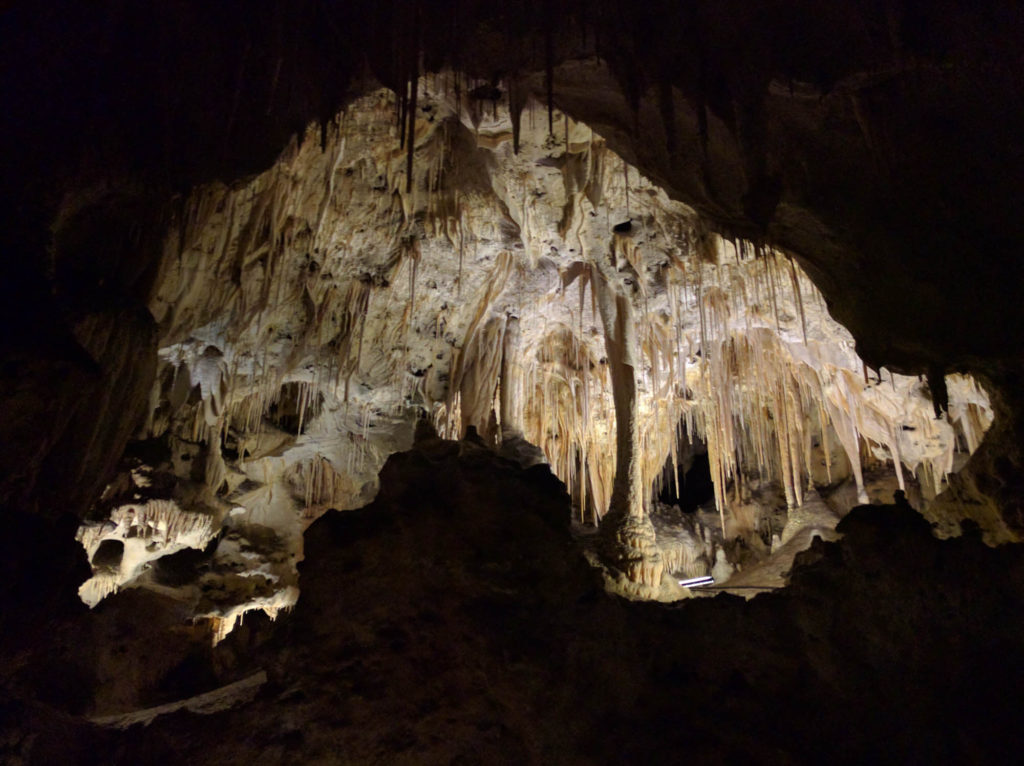
Painted Grotto – soda straws are tinted yellow, orange, red and brown due to the presence of iron and other minerals.
Jim White Tunnel
The path then takes us through a narrow tunnel filled with ivory colored formations. The tunnel itself feels like a life-sized Painted Grotto through all manner of cave formations, large and small, all compressed within this one path. Our path is paved, well lit, and protected by a metal guardrail. Back in the 1890s, there was no light except for Jim’s lantern. I wonder if he hit a shin or two while navigating this jagged area.
Just as we exited the tunnel, we came upon a scene where pinnacles and columns were shaped like miniature pagoda spires. We stayed a while and watched few young artists sketch the scene before us. As we turn to finish walking the rest of the trail, we look up at the ceiling and spy elegant stone formations flowing out of dark orifices like mocha colored waterfalls.
Underground Lunchroom
Before I realize it, we’ve reached the Natural Trail and Big Room junction. We take the right path and pass the elevators leading up to the surface. Beyond that is a large room with a cafe and dining tables. Back in the 1950s, the Underground Lunchroom served at least millions of people over several decades, though the exact number is impossible to know. One record states, that over one million visitors a year at these very tables. Old photos show visitors lined up to buy box lunches, drinks, and even cigars. Sadly with so many people, too many flood lights, and the kitchen putting out heat, water, and food particles, the cave ecosystem was extremely altered to the point that cave formations were being harmed.
Today, visitors can eat in the Caverns to this day. You can purchase a simple meal and eat a candle lit lantern table. To protect the cave, food service is limited to sandwiches, salads, yogurt, parfaits, and other food that does not involve cooking in the caverns. They also sell the standard array of souvenirs including headlamps, shirts, hats, and postcards. One of the most popular activities for visitors is to write and send postcards from underground. Yes, there is a mailbox in the caverns, and you can stamp your postcard “Mailed from 750 feet below ground.”
Near the Lunchroom, is possibly the oddest bathroom I’ve been in. It’s a normal bathroom by all accounts, except that you have to walk through a small tunnel to reach it, and cave formations protrude from the walls like out of place decorations. Hitch reported that the men’s bathroom is similar, but without the rock formations.
Back to the Surface
Once we’re both had our fill of wandering around the Lunchroom, we take the elevator 750 feet up to the visitor center. I take a moment to check my phone, and noticed that we’ve been in the caverns for a little over four hours! We grab a meal at the Cave Cafe, reminisce over the beauty and wonder, and make plans to see more.
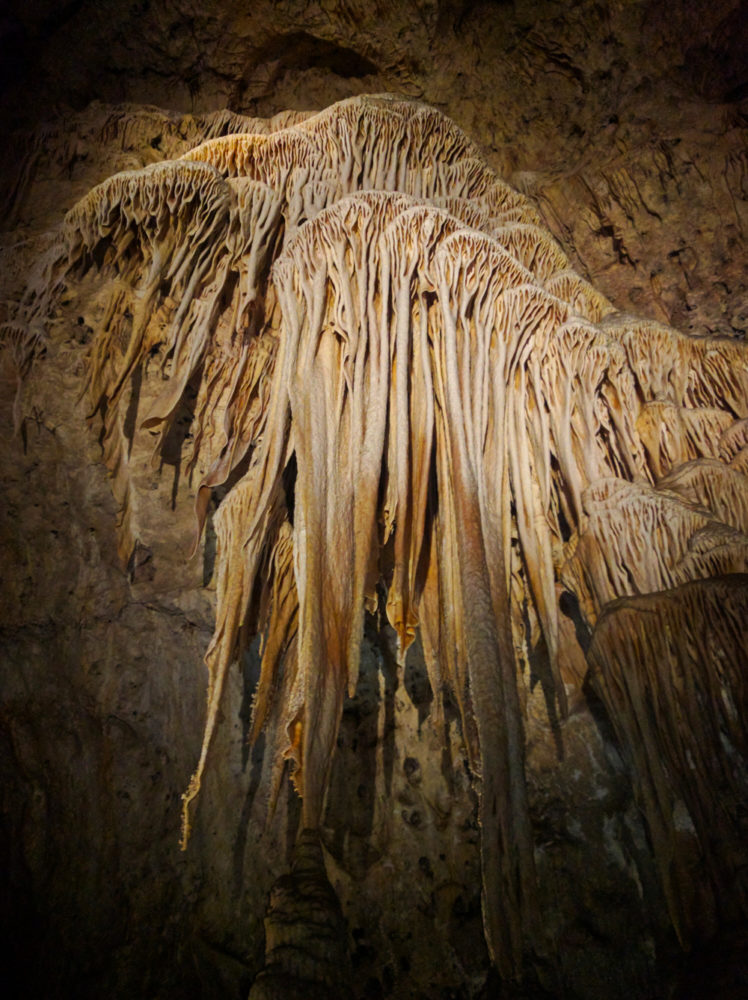
Carlsbad Caverns Draperies
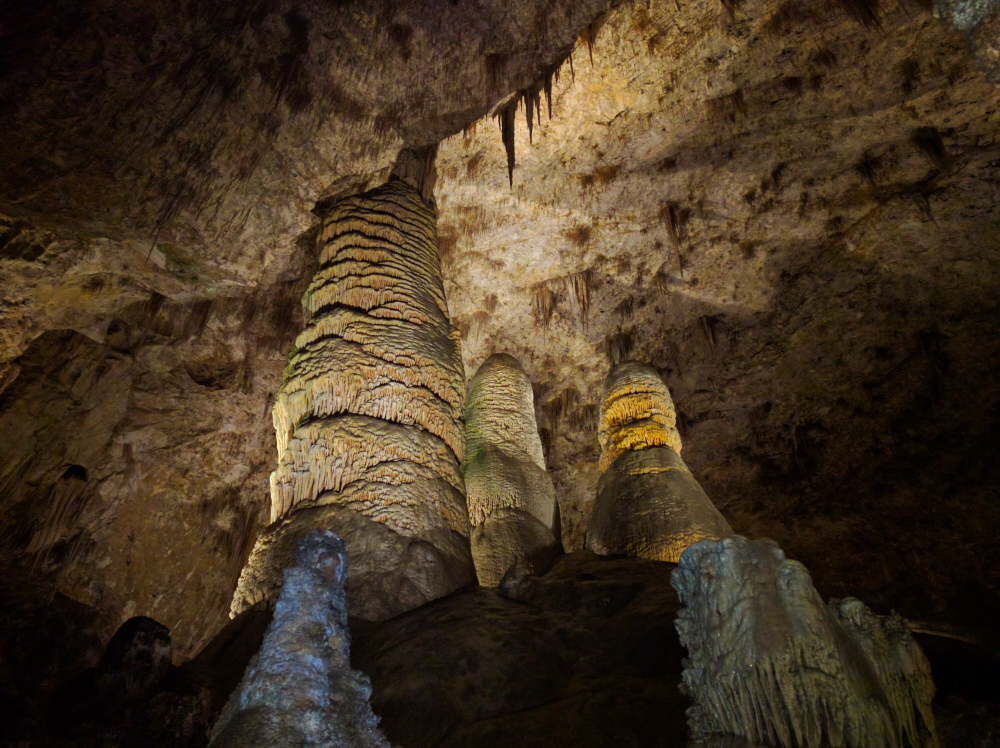
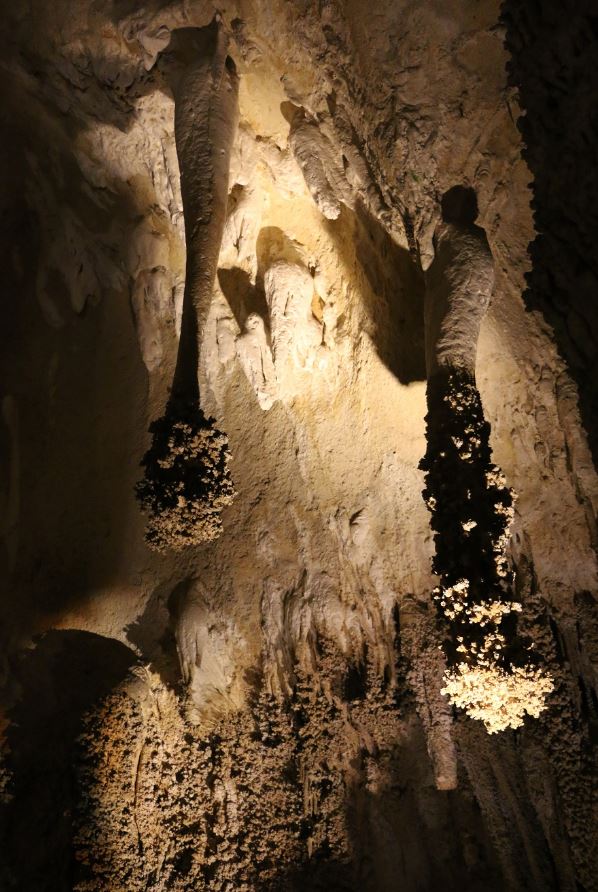
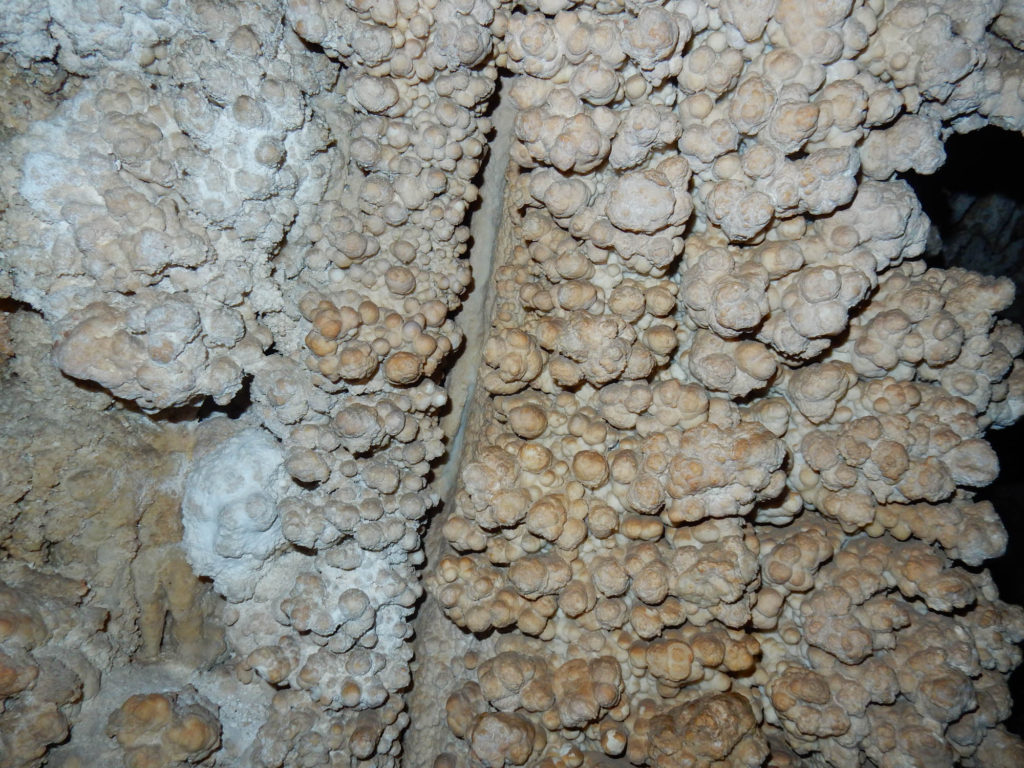
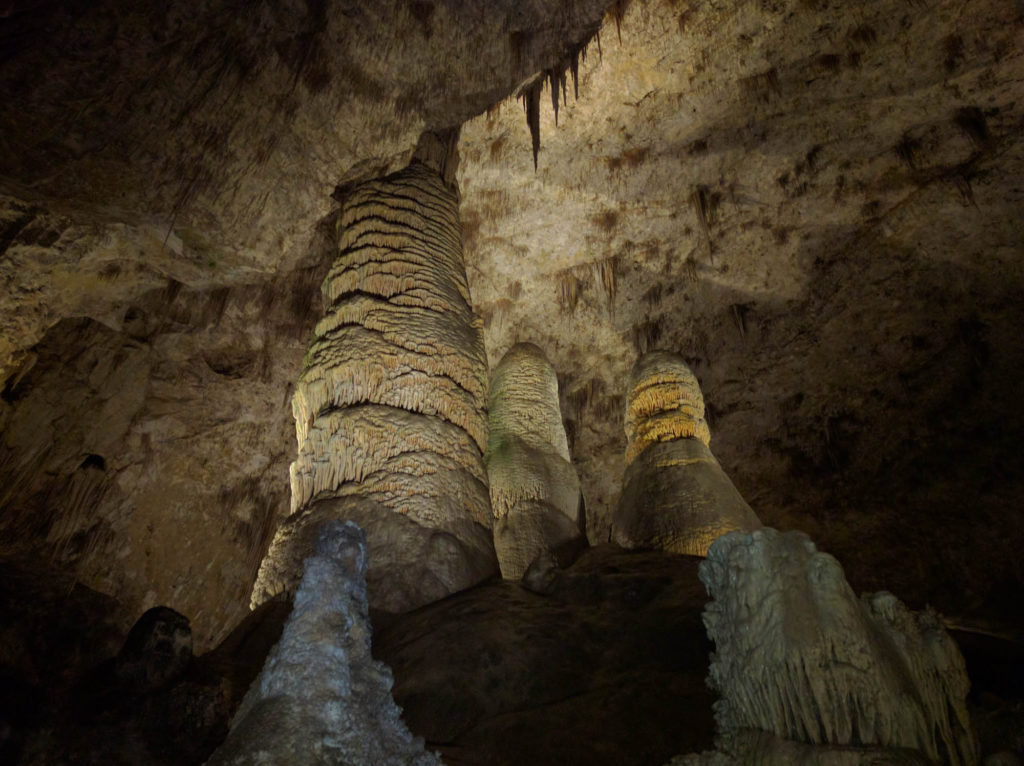
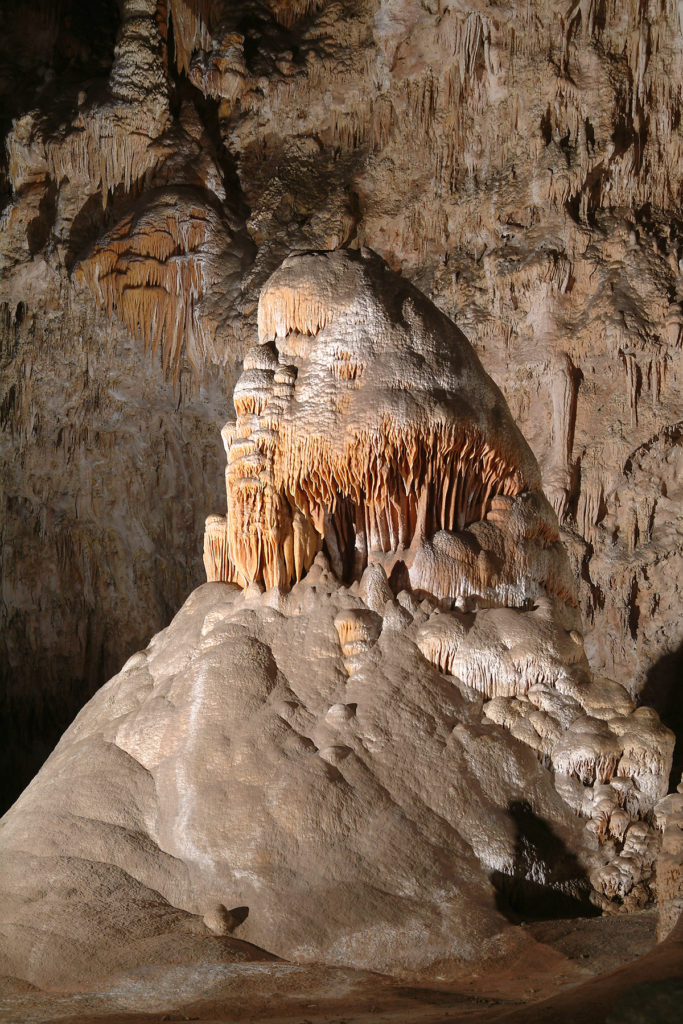
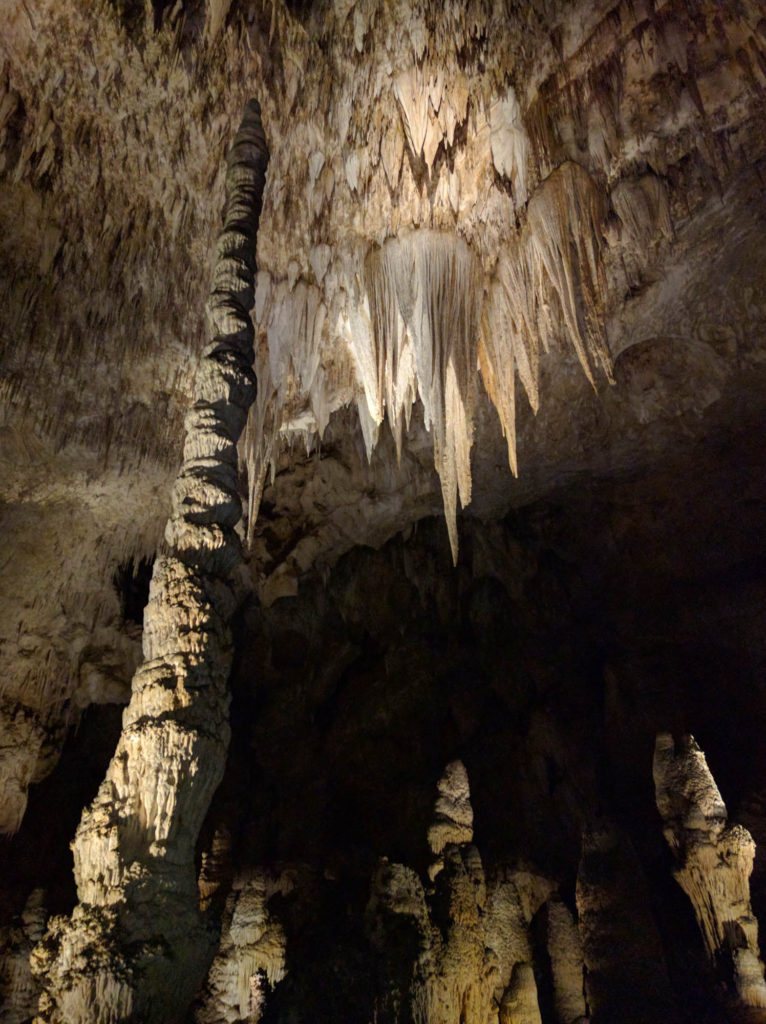
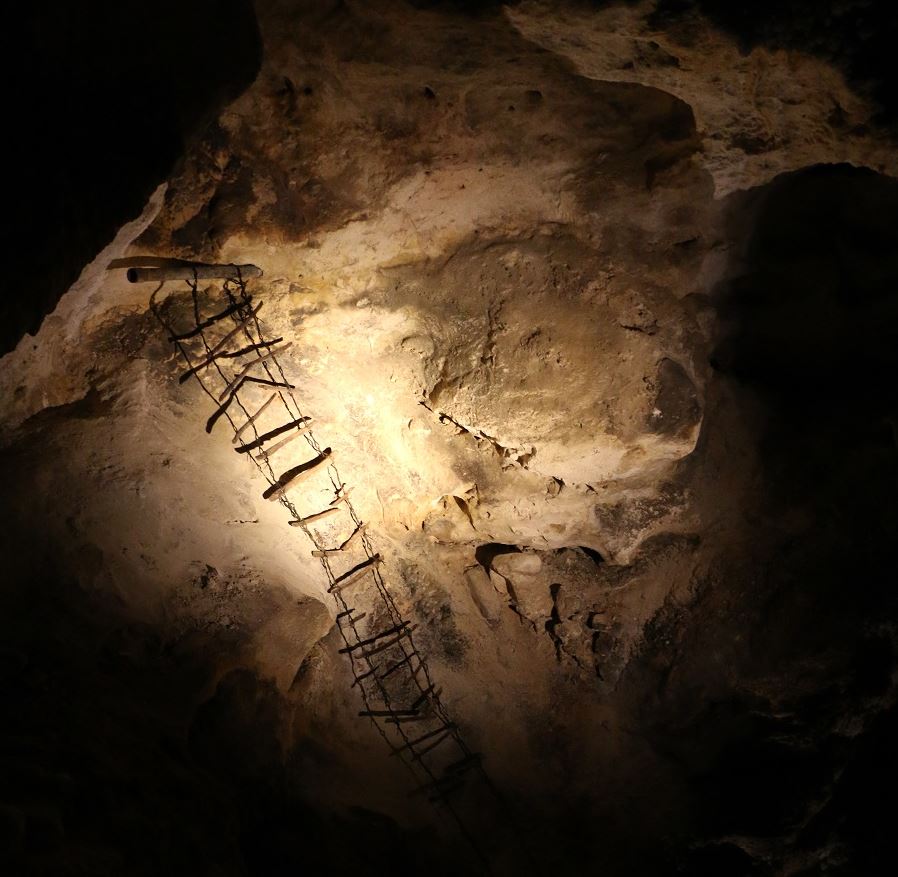
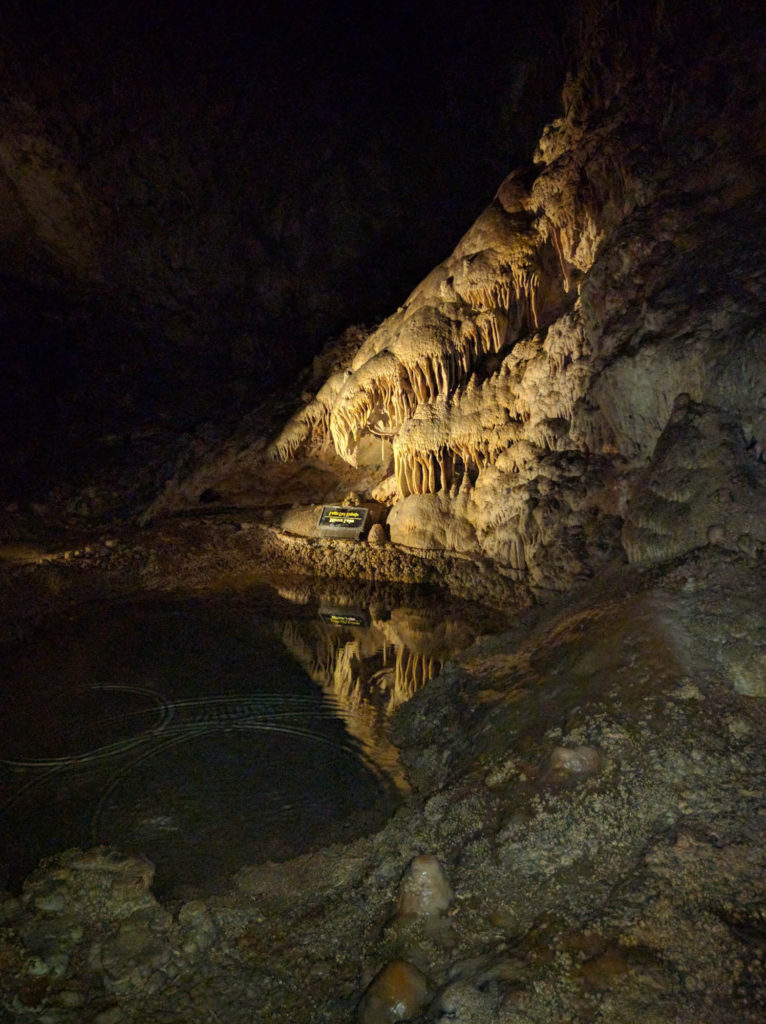
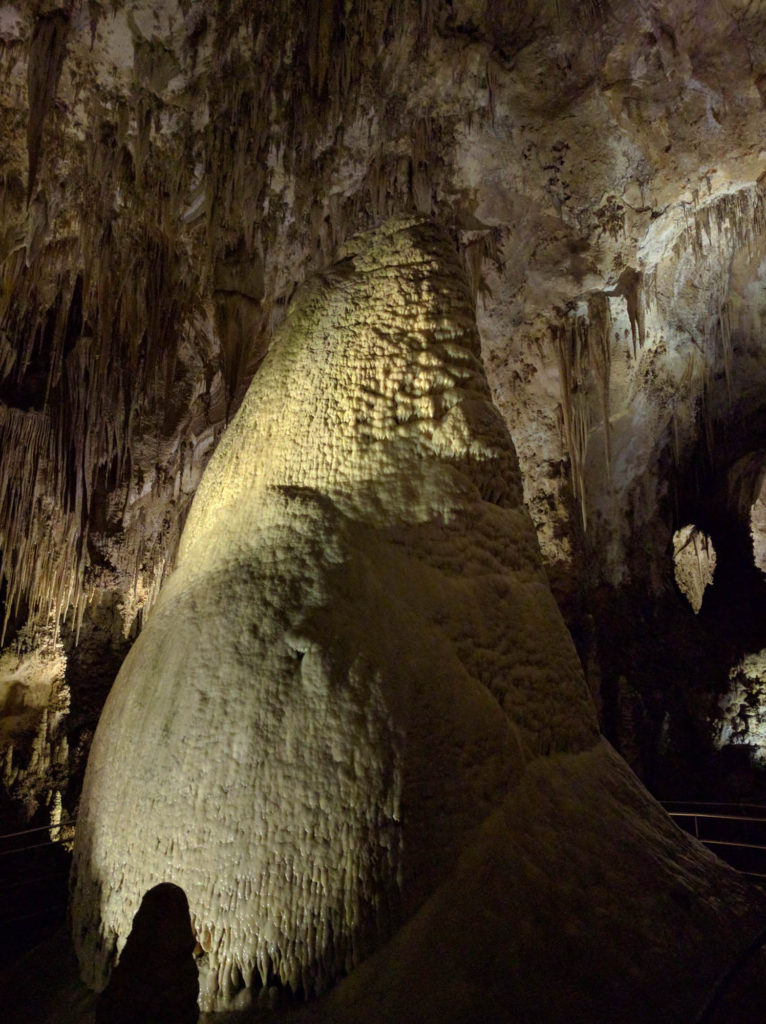
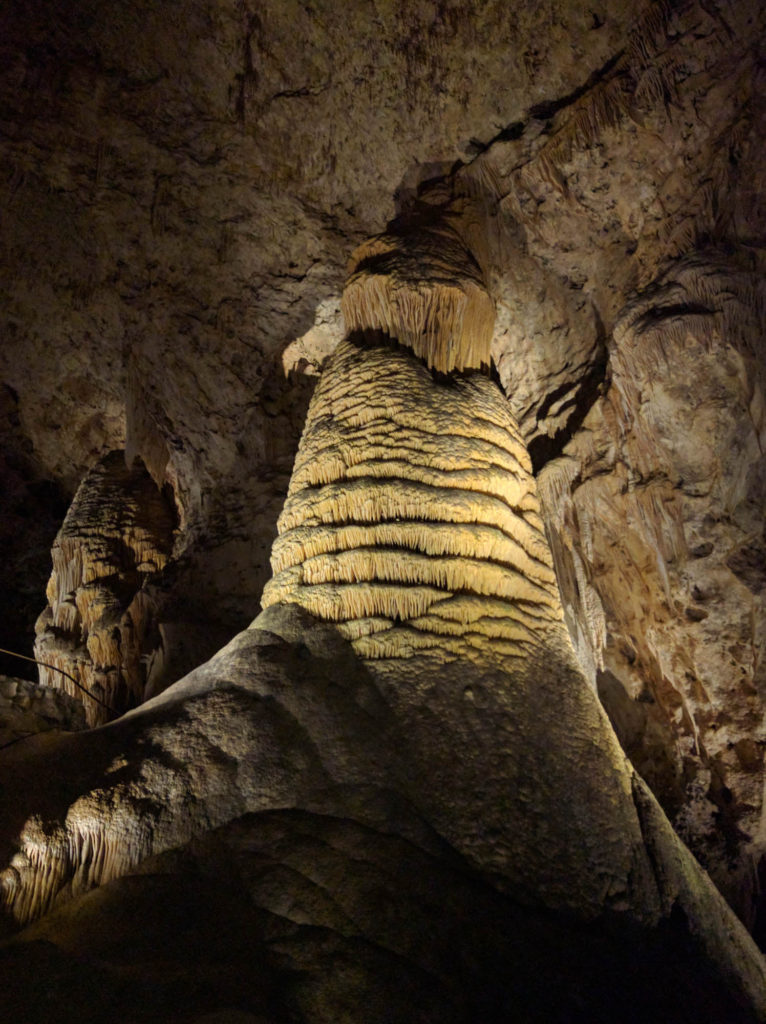
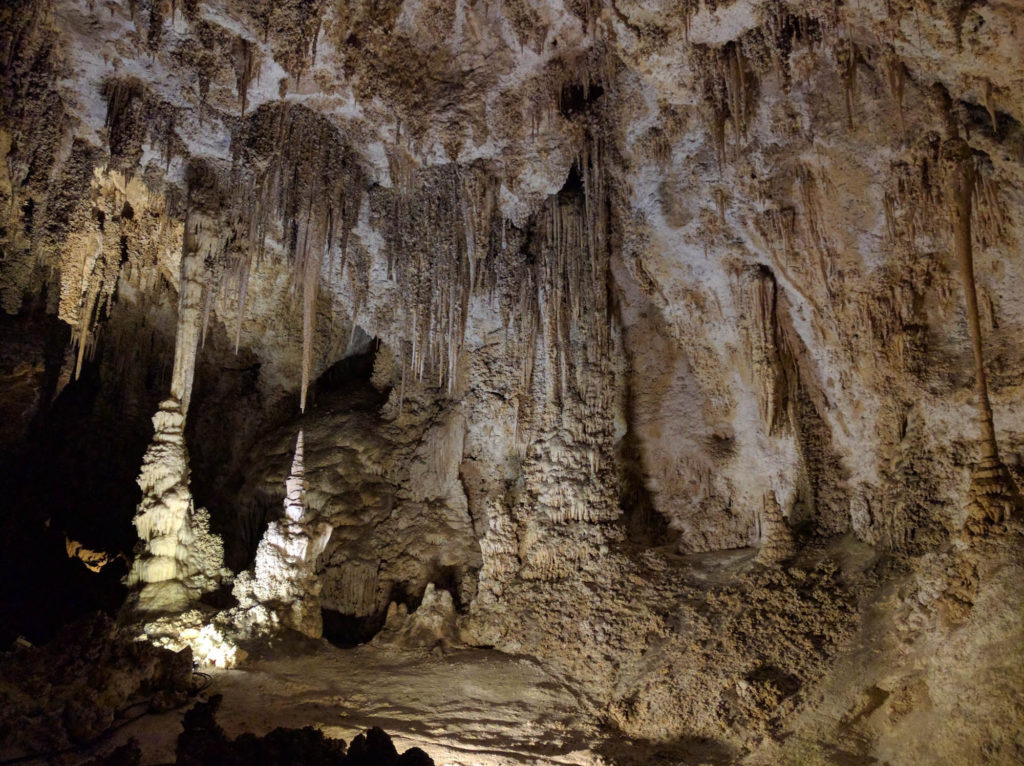
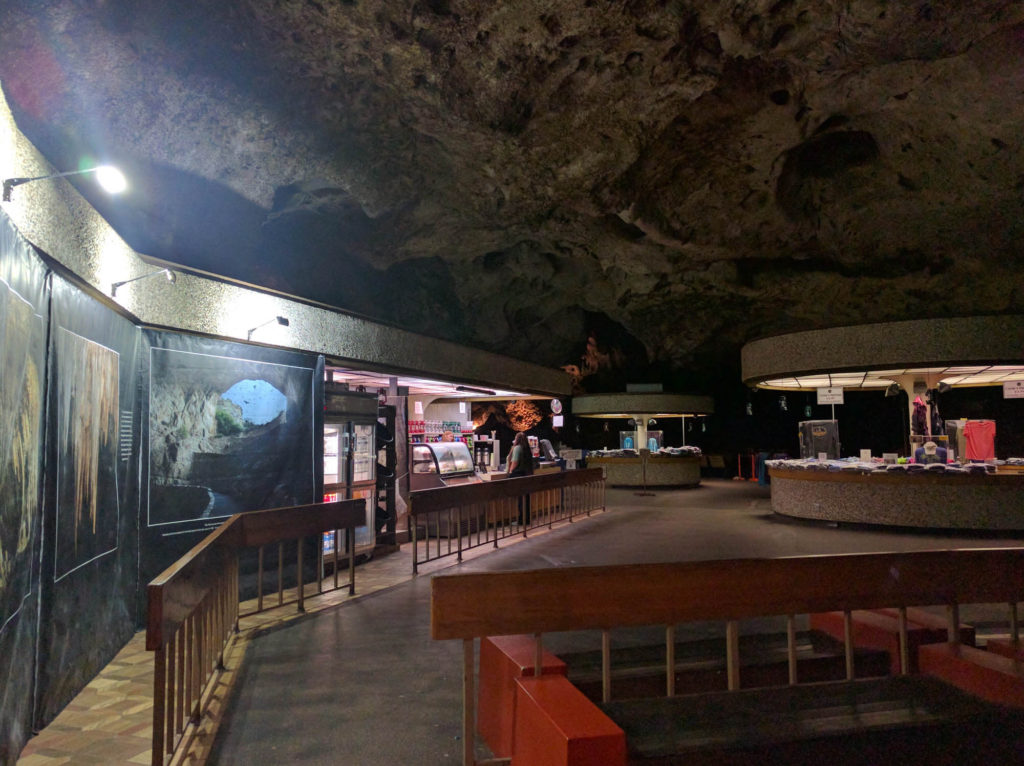
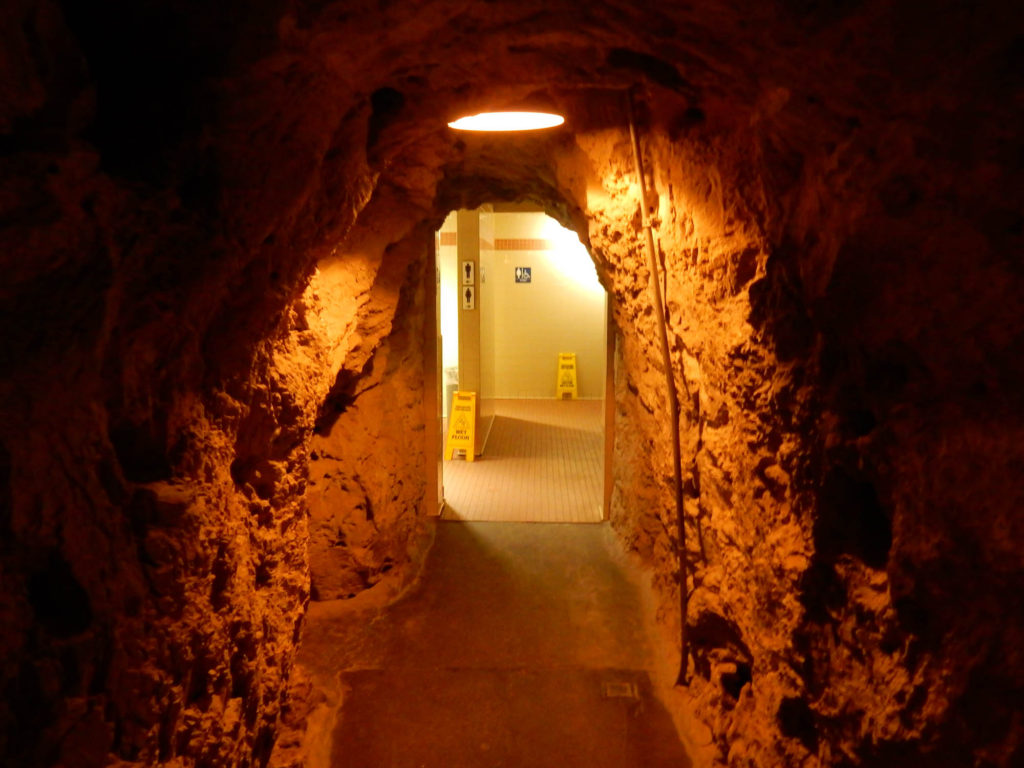
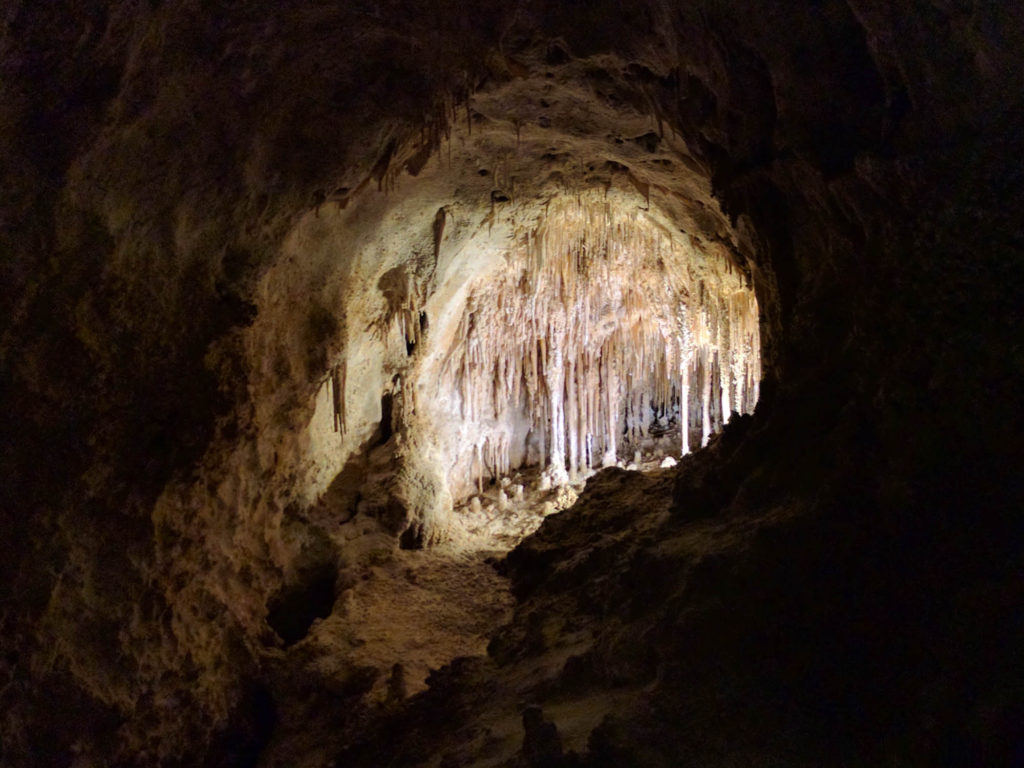
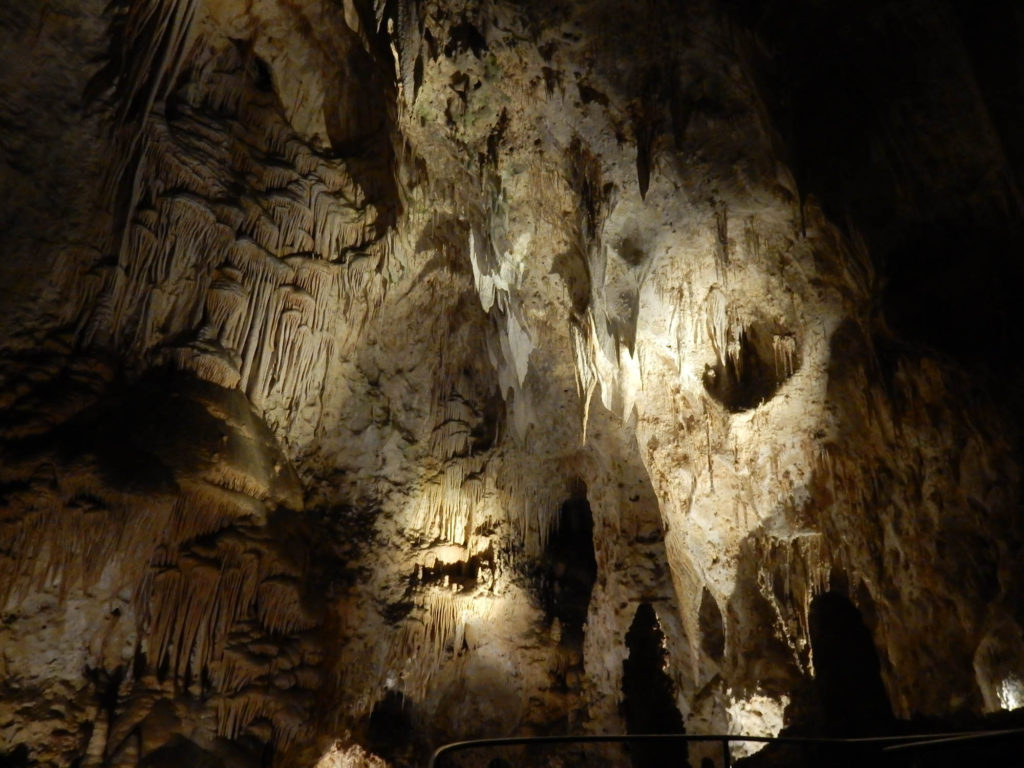
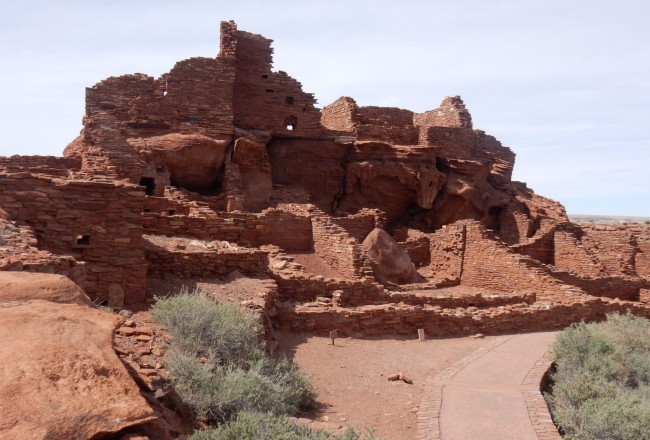
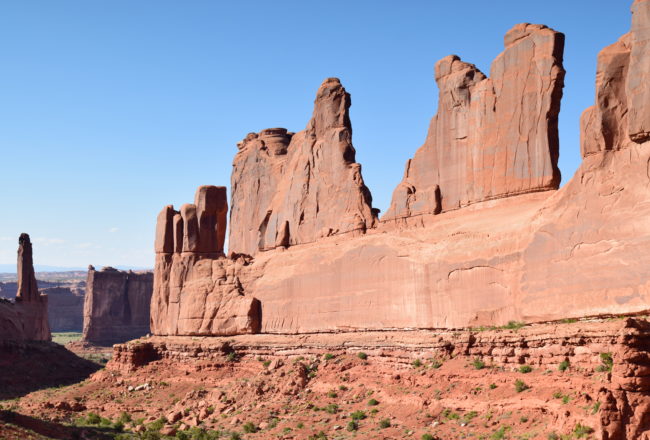
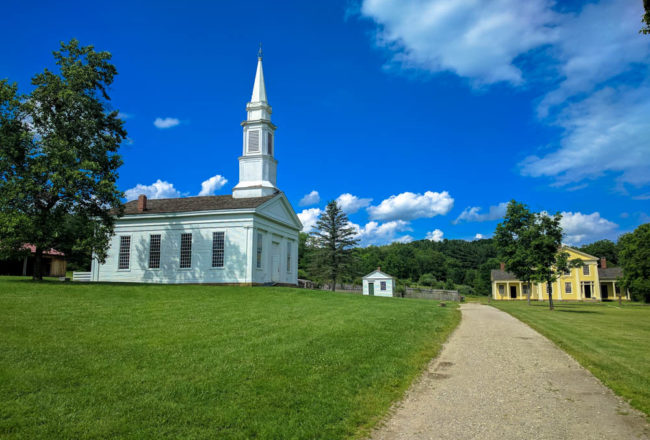


1 Comment
Hiya. Jay from Chicago here. I have been wait to comment on your Petrified Forest NP post but a month has passed so I decided to comment here as you had built up Carlsbad Caverns. I ended up having to go about an hour out of way to go and would not have done had it not been for your glowing reviews. It did not disappoint. Add me on FB if you want. Hope all is well and it was good meeting and speaking with you two.